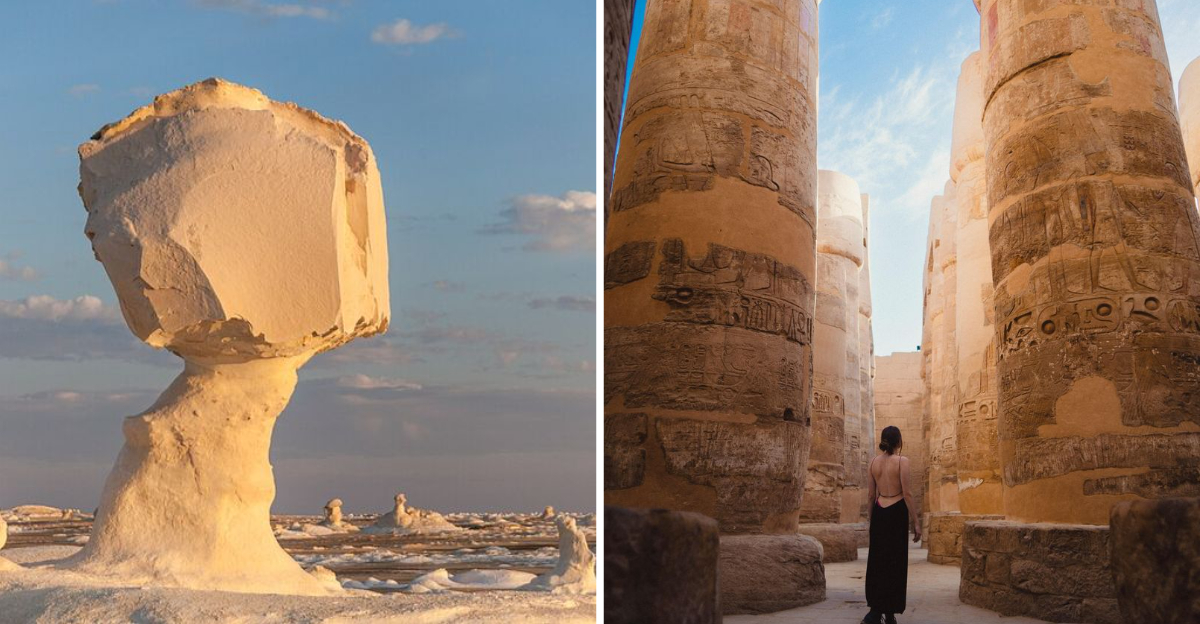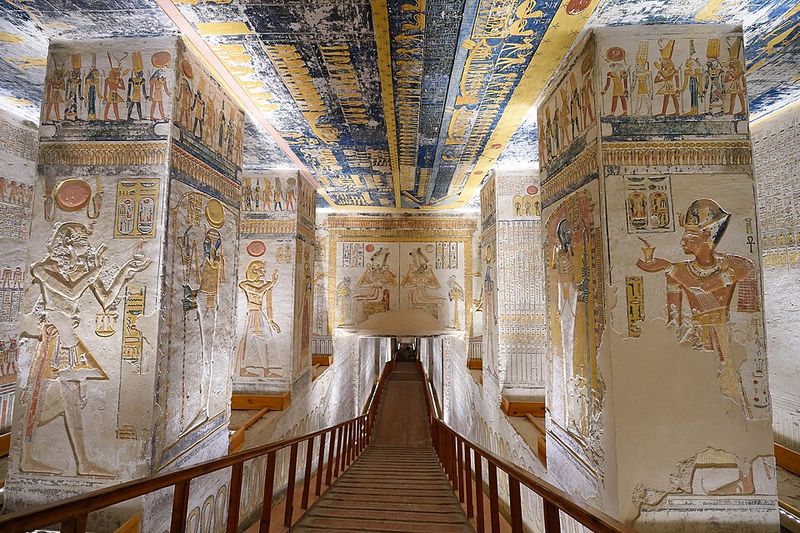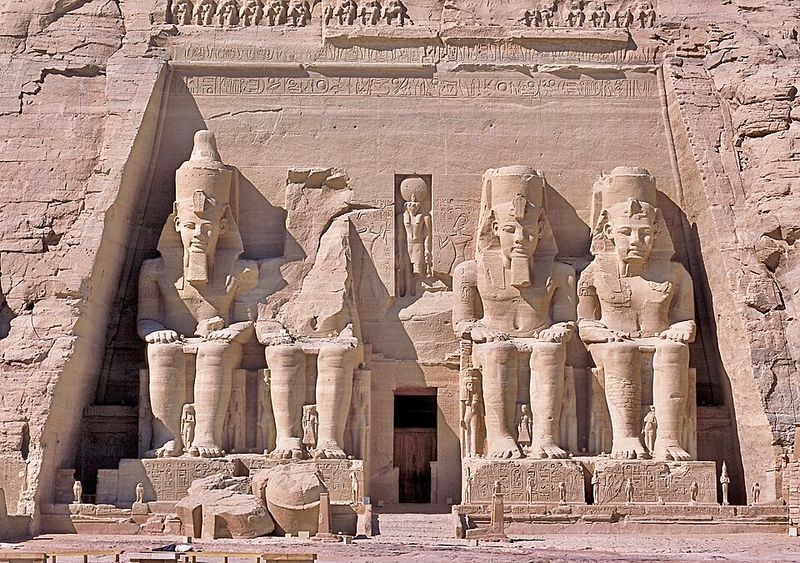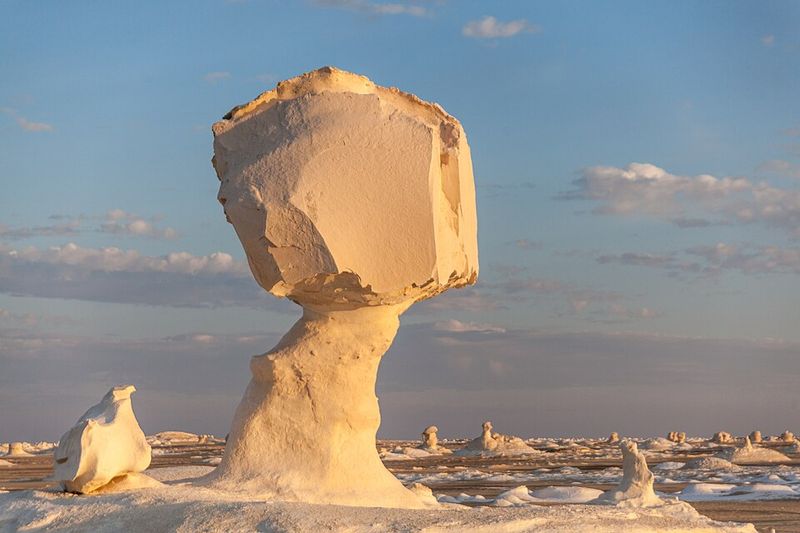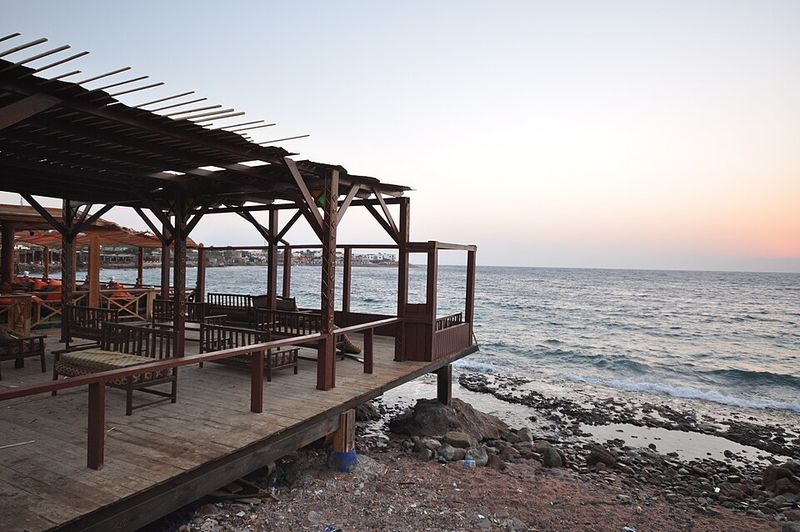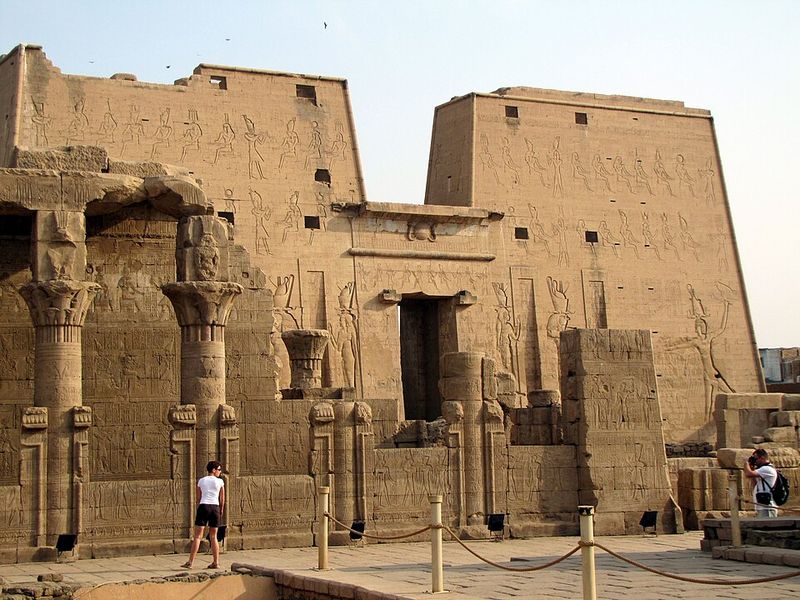Egypt is a mosaic of timeless wonders, shimmering deserts, and vibrant coasts that captivate every kind of traveler. From colossal temples carved into cliffs to underwater worlds teeming with life, each stop reveals a different facet of the country’s soul. Whether you’re chasing ancient myths, serene oases, or star-drenched skies, these destinations promise unforgettable moments. Ready to discover the Egypt that lingers long after your journey ends?
The Pyramids of Giza
The Pyramids of Giza rise from the desert like timeless monoliths, embodying humanity’s enduring fascination with the ancient world. The Great Pyramid, last survivor of the Seven Wonders, anchors a complex of tombs, causeways, and the enigmatic Sphinx. Step inside select chambers to feel the cool stone and sense the mathematical precision etched into every angle. Nearby, the Solar Boat Museum reveals a cedar vessel believed to transport a pharaoh into the afterlife. Visit at sunrise for ethereal light, or stay for the evening sound-and-light spectacle that casts dramatic narratives across the limestone. Camel rides and panoramic viewpoints offer sweeping perspectives of the plateau. Whether you’re an archaeology buff or a casual traveler, Giza delivers awe in every direction, inviting reflection on ingenuity, cosmos, and kingship.
Luxor’s Karnak Temple Complex
Karnak overwhelms the senses with scale and symbolism, a sprawling testament to 1,500 years of ritual devotion on Luxor’s east bank. Enter the Great Hypostyle Hall and you’re dwarfed by 134 colossal columns, their capitals flowering like papyrus under shafts of golden light. Obelisks pierce the sky; sacred lakes mirror drifting clouds; sanctuaries whisper the names of Amun-Ra and powerful pharaohs. Walk slowly to read carved histories: triumphs, offerings, and cosmic alignments. As day fades, the sound-and-light show layers narration over stone, animating kings and gods with shimmering illumination. Guides reveal hidden details—foundation rituals, quarry routes, and pigment traces. Combine morning exploration with a late return for the spectacle. Karnak is not just a temple; it’s a living archive of theology, engineering, and imperial ambition.
The Valley of the Kings – Luxor
The Valley of the Kings folds into the Theban hills, a sun-baked amphitheater concealing royal tombs painted with afterlife maps and starry ceilings. Descend into chambers where color still breathes after millennia, narrating Ra’s nightly voyage and the pharaoh’s rebirth. Tutankhamun’s modest yet iconic tomb sits among grander neighbors like Seti I and Ramses VI, each masterpiece unveiling theology in intricate vignettes. Conservation measures rotate openings, so check which tombs are accessible. Early arrivals enjoy cooler air and quieter corridors, ideal for lingering over hieroglyphic details. Don’t miss the panoramic views from the surrounding paths, where cliffs glow amber at dusk. The valley’s hush is profound; every footstep feels like a dialogue with eternity, guiding you through Egypt’s most intimate royal stories.
Abu Simbel Temples
Abu Simbel astonishes before you even step inside, its facade guarded by four 20-meter statues of Ramses II carved directly into Nubian sandstone. The interior chambers unfold with battle scenes, deities, and a sanctuary aligned to catch the sun’s rays on two specific days each year. Equally remarkable is the modern rescue: engineers relocated the entire complex block by block to save it from Lake Nasser’s rising waters. Quiet mornings showcase the temple’s sculptural finesse, while afternoon light deepens textures. Arrive by flight or convoy from Aswan, timing your visit to avoid peak crowds. The solar alignment in February and October draws enthusiasts worldwide. Standing beneath those serene colossi, you feel both ancient precision and modern solidarity converge in a single, breathtaking triumph.
The White Desert
The White Desert spreads a dreamlike gallery of chalk sculptures across a silent, wind-carved plain. Mushroom caps, towering cones, and abstract silhouettes rise from powdery ground, glowing gold, rose, and blue at sunrise and sunset. Campers find cosmic solitude under crystal skies where the Milky Way pours across the horizon. Guided 4×4 excursions navigate protected zones, with Bedouin hosts preparing fireside meals and stories. Bring layers; temperatures swing sharply after dark. Photographers should plan for blue hour and moonless nights, when textures sharpen and stars ignite. Combine with nearby Black Desert and Crystal Mountain for a striking geological trilogy. In this otherworldly expanse, time slackens, footsteps hush, and nature’s sculpture park reveals a gentler, wilder Egypt beyond the pharaohs.
Alexandria’s Bibliotheca Alexandrina
The Bibliotheca Alexandrina resurrects a legendary spirit in sleek modern form, its sun-tilted roof and inscribed granite echoing a dialogue with global knowledge. Inside, a colossal terraced reading room bathes in natural light, creating a contemplative hush amid thousands of volumes. Beyond books, the complex houses museums, galleries, and a planetarium, making it a cultural engine for the Mediterranean city. Exhibits trace Egyptian manuscripts, science heritage, and regional art. Temporary shows keep the program fresh for repeat visitors. Stroll the Corniche afterward to savor sea breezes and cosmopolitan cafes. The library’s architecture invites lingering—angles, shadows, and inscriptions reward slow looking. It’s a beacon of learning that connects Alexandria’s storied past with a vibrant, forward-looking present.
Siwa Oasis
Siwa Oasis feels like a secret whispered by the desert—palms rustling, salt lakes glittering, and mud-brick villages blending with dunes. Float effortlessly in mineral-rich pools, then wander the ruins of the Shali fortress, its earthen walls glowing at golden hour. The Temple of the Oracle conjures tales of Alexander the Great, while Jebel al-Mawta offers wide, wind-swept views. Siwan culture, Amazigh language, and distinctive crafts add layers of authenticity. Cycle dusty lanes between gardens and springs, pausing for dates and mint tea. Nights reveal constellations unmarred by city glare. Remote yet welcoming, Siwa invites slow travel and gentle curiosity—an oasis of calm where time dilates and traditions endure.
Philae Temple – Aswan
Philae Temple seems to float on the Nile, its graceful colonnades mirrored in still water as boats glide to Agilkia Island. Dedicated to Isis, the complex blends late Pharaonic and Ptolemaic elegance—finely carved reliefs, airy courtyards, and a serene sanctum. In the 1960s, blocks were numbered and relocated to save Philae from the Aswan High Dam’s reservoir, a feat of preservation as inspiring as the temple itself. Visit at dusk for amber light and tranquil ambiance. The evening sound-and-light performance weaves mythic narratives through illuminated stone. Combine with nearby Aswan quarries and the Unfinished Obelisk for context. Philae’s intimate scale and island setting create a lyrical counterpoint to Egypt’s grander monuments.
Dahab – Sinai Peninsula
Dahab pairs barefoot ease with adrenaline, its sapphire reefs and wind-swept mountains inviting equal parts chill and thrill. Divers and snorkelers drift over coral gardens at the Blue Hole and the Canyon, while beginners learn along sheltered shores. On land, windsurfers carve turquoise chop, hikers tackle Sinai trails, and yoga mats unroll at sunrise terraces. The waterfront promenade hums with cafes serving mint tea and fresh seafood over rugs and cushions. Evenings bring soft lantern light, oud melodies, and easy conversation. Day trips to Mount Sinai or Ras Abu Galum expand the adventure. In Dahab, time loosens its grip; you find yourself lingering, salt-kissed and content, plotting one more dive and one more dawn.
The Temple of Horus – Edfu
The Temple of Horus at Edfu is Egypt’s best-preserved window into sacred ceremony, its towering pylons and shadowed corridors intact from Ptolemaic days. Falcon guardians flank the entrance, while walls narrate Horus’s battles and elaborate festivals. Step into the hypostyle hall, then the dim sanctuary where incense once curled and oracles murmured. Centuries of protective sand left reliefs astonishingly sharp—glyphs, offerings, and ritual scenes read like a living manual. Arrive early to savor quiet and oblique light. Guides decode inscriptions that map processions, priestly ranks, and cosmic order. Often visited between Luxor and Aswan by river cruise, Edfu rewards unhurried attention with detail upon detail, beauty upon belief.
